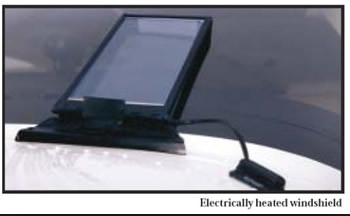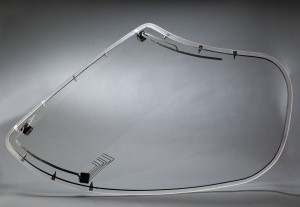I remember my IFR instructor telling me to keep the windshield plate heat switch to ON even after exit icing conditions and only switch it OFF when I meet positive (or near positive temp), because of the potential break risk due to an almost immediate and abrupt cooling.
I guess (hope) the plate has been designed for these abrupt temp. changes but not sure, so I keep the heat ON and wait for positive temp like instructed…
Anyone…?
I was instructed to turn the windshield heating on only when there is ice I need to remove and keep it on for no more than 30 seconds. In flight it is usually off (even if that means getting ice) and it is being turned on in approach to clean the windshield for the landing. That’s on a Seneca II. I would like to hear other opinions.
There is only one answer to this kind of question (sorry if it sounds precocious): Operate this kind of system as the manufacturer writes in the aircraft operating manual. Sometimes there are even differences between variants of the same type. For the Cessna 421 for example different types of heated windscreen exist which need to be operated differently.
Yes it is not an IFR procedure it is an aircraft systems point. In the air I always fly with a heated windshield on when OAT below 0 in PA46 and C510.
If there is no limitation then do what you like. Having replaced a heated windshield I tend to buy into the school that says leaving it on tends to be better for the micro filaments in the glass. There is no meaningful evidence for this however. Nor the old wives tale about improving resistance to birdstrike.
Is this the windshield plate (common on old piston twins)

or the GBP 20,000 windshield with the heated wires in it

The POH has no ‘leaving icing conditions’ checklist and supplements give no precise indications on when to switch off the windshield heat.
I have added that in my ‘before landing checklist’…
A quick google search found me a 1972 Seneca POH which on page 104 (in the supplements section) gives operating limitations for the heated wind shield panel: http://wayman.net/files/Piper-Seneca-1972-POH.pdf
But again: different Senecas may be equipped with different windshield panels having different limitations.
Here are the extracts of the POH on the Seneca I fly:
2.25 FLIGHTINTO KNOWN ICING CONDITIONS
For flight in icing conditions the following equipment must be installed in accordance with Piper drawings or in an FAA approved manner:
(c)Electric windshield panel
Before entering probable icing conditions use the following procedures:
Windshield heat – on (when entering icing conditions)
SECTION2 -LIMITATIONS
Under no circumstances should the unit be turned on for a period exceeding 30 seconds unless:
(a)The aircraft is in flight or
(b)Ice exists on the heated panel.
ALTERNATOR FAILUREIN ICINGCONDITIONS
Electric Windshield…………………………………….OFF
That’s all. No information about when to turn it on or off, except when entering icing conditions.
Well it says there is no limitation on using it indefinitely in flight. So it is your choice.
Nor the old wives tale about improving resistance to birdstrike
IMHO it depends on the aircraft type and manufacturer. Boeing wants a speed limit with window heat inop, e.g. B 737 “maximum 250kt below 10 000ft”, in some expanded
procedures is written IIRC “or wherever birds are likely to be encountered” -
Airbus knows no speed limit but “crew awareness” whatever that means … but when you go 350kt at 3000ft and hit a 14lbs goose, your window is going to get smashed – window heat OFF or ON.
That happened to a B707 in the mid seventies approaching Cologne-Bonn airport. Fortunately nobody was killed except the poor animal.